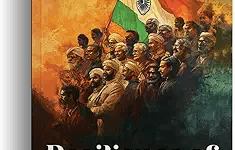The architect of Indian constitution and the greatest social scientist the subcontinent had ever seen, Dr.B.R.Ambedkar said “The history of India is nothing but the history of mortal conflict between Buddhism and Brahmanism*”. Today’s generation may not be that interested in such history but what if I told you the same story has the origins of vegetarianism within it?
Here is the story from the essay “Who were the Untouchables?” by Dr. B.R.Ambedkar.
Let us go back to circa 500 BC – 400 BC. This was the time Jainism and Buddhism arose and spread like wildfire, with both social acceptance and royal patronage. This threatened the social stratification of the Indian society under the doctrine of “caste” like never before. The Brahmin supremacy was hence at risk. They had to retaliate in ingenious way to maintain the hegemony.
In fact, the Brahmins were then the biggest consumers of meat including beef. Since cow was the preferred sacrificial animal to Gods and the Brahmin had to be present at any sacrificial ritual, all meaty portions were served to the Brahmins and only bones and discarded organs went to the host and other castes.
The first target was this ritual sacrificing of animals. The ritual status of cow was changed from a prestigious sacrificial animal to a “sacred” animal, thereby eliminating it from the allowed list of sacrificial animals. However, Buddhists continued to eat cow meat. Jainism’s vegetarianism was based on “ahimsa”, non-violence towards all living creatures. While Buddhism was inspired by Jainism in many aspects, it took a more practical approach towards dietary restrictions – of not killing animals intentionally for food but being okay with consuming dead animals and sacrificial animals.
Buddhists continued to eat cow meat despite its new sacred status. The assassination of Buddhist emperor, Brihadratha of the Maurya dynasty by his Brahmin commander-in-chief Pushyamitra Sungai in 185 BC was a game-changer. Manu Smriti was written sometime after, strictly codifying the caste-hierarchy. The royal patronage of Brahmins under Guptas grew to an extent that cow slaughter was made a capital offence by 400 AD.
So, Buddhists and non-Brahmin Hindus (majority of Hindus) had then become “impure” because they broke ritual and legal laws surrounding cow slaughter and its consumption. The Brahmin class was not entirely satisfied with this distinction. They needed another distinction within the Hindu-fold that made them superior over other Hindus. This was the eureka-moment that formulated caste-based “Vegetarianism” as a virtue of Brahmins, staying away from all meats, not just cow-meat.
Although caste-based stratification already existed before the advent of Buddhism, it really got rigid somewhere between 200 AD and 600 AD. This was the period the meat-eating (including cow) Buddhists, lower castes, rebels, unruly elements etc were all grouped together as “Untouchables” – ritually impure sub-humans, thereby creating a ritually pure super-humans, the Brahmins.
Non-Brahmin Hindus had to therefore give up consuming cow-meat altogether if they didn’t want to be associated with Untouchables. In addition, this was the period when vegetarianism gained the highest ritual-purity status among Hindus, hence the vegetarian-aspiration that is seen in BC castes till date. This is how cow-slaughter and vegetarianism were used as weapons to annihilate Buddhism in the subcontinent and to maintain supremacy over non-Brahmin Hindus.
*Brahmanism – Sanatana Dharma hijacked by birth-based caste-system









Add comment